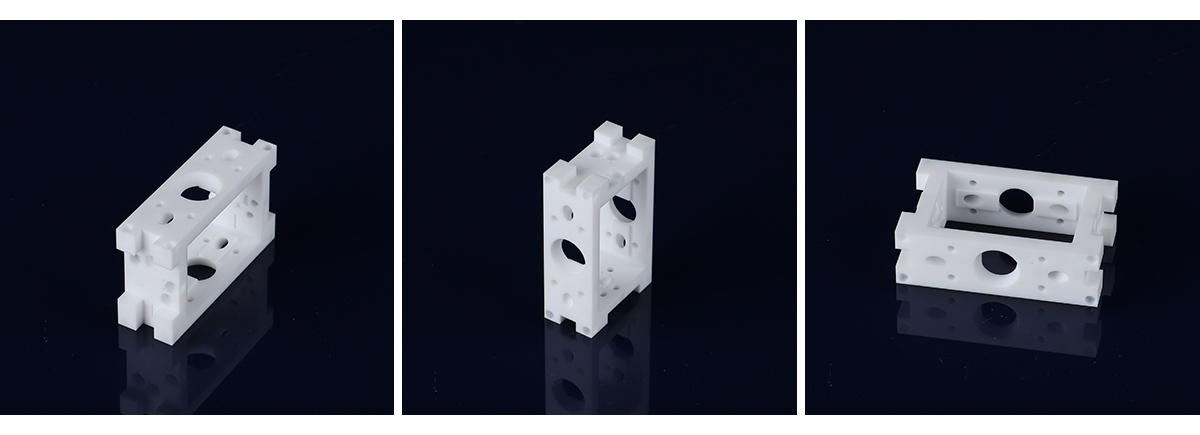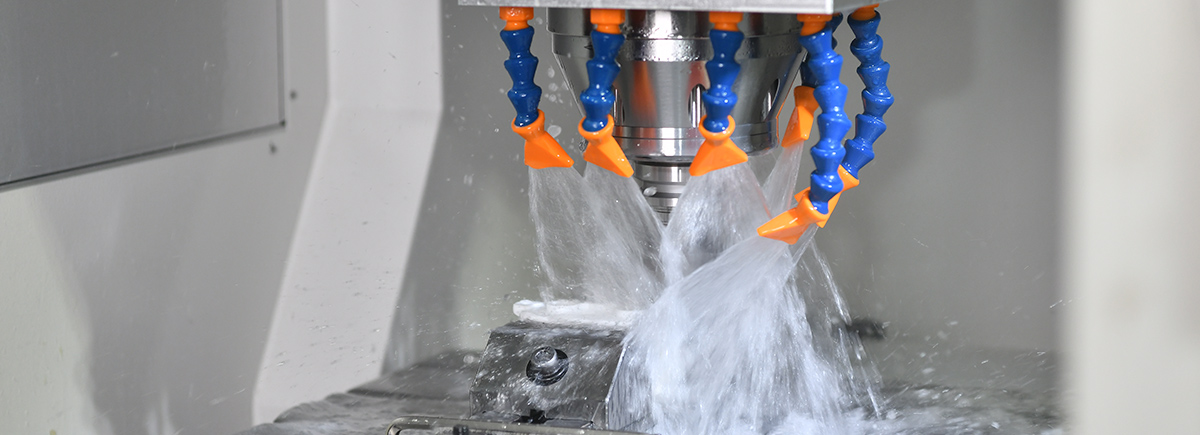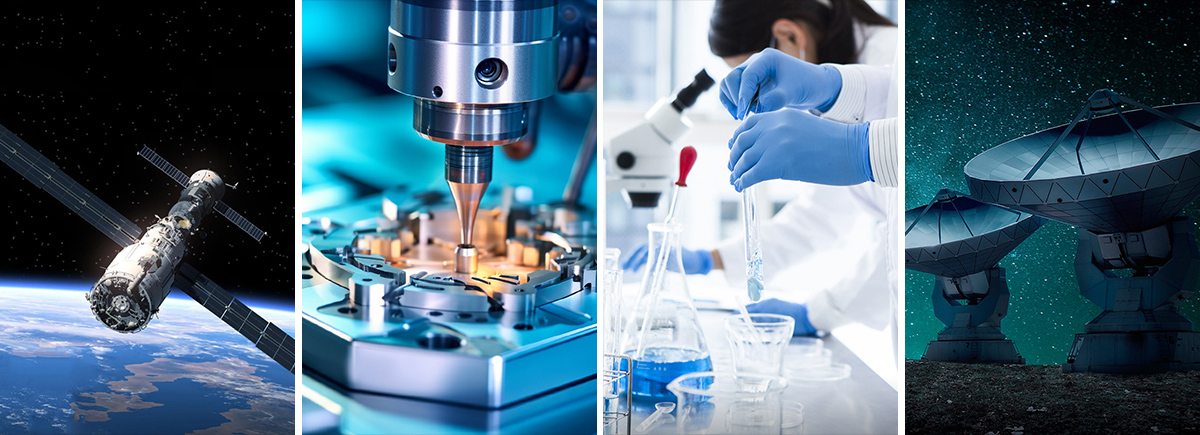How to process Macor glass ceramics
Macor is a machinable glass ceramic developed by Corning, which has attracted great attention in the field of advanced ceramics due to its unique performance combination. It is known for its ease of processing, excellent electrical insulation, high temperature stability, and low thermal conductivity. These characteristics make it an ideal material for various high-performance applications, including aerospace, electronics, and medical equipment. However, the processing of Macor ceramics, especially complex structural components, requires a thorough understanding of their performance and the precise machining techniques required to achieve the desired results.

Understanding Macor ceramics
Macror ceramics are composed of fluorophlogopite mica composite materials in a borosilicate glass matrix. This combination enables the material to be processed to strict tolerances without the need for post firing, which is a clear advantage of other ceramic technologies. However, the simplicity of this processing is not without challenges, especially when dealing with complex shapes.
Material characteristics
It is crucial to understand the basic characteristics of Macor ceramics before delving into processing technology:
1. Machinability: Unlike most ceramics that require diamond grinding, Macror can use standard metal processing tools for machining.
2. Thermal performance: The maximum operating temperature of the Macor is 1000 ° C, maintaining its integrity under high thermal stress.
3. Electrical insulation: Excellent electrical insulation performance makes it suitable for electronic applications.
4. Chemical stability: Macor can resist most chemicals and maintain durability in harsh environments.
The challenges faced in processing complex components
Processing Macor ceramics into complex structural components involves several challenges:
1. Precision and tolerance: Due to the inherent brittleness of materials, it is difficult to achieve strict tolerances.
2. Tool wear: Although tools have machinability, tool wear can be very severe, especially when creating complex shapes.
3. Surface smoothness: To achieve high-quality surface smoothness, it is necessary to carefully control the processing parameters.
4. Thermal stress: The heat generated during the processing can cause thermal stress, leading to microcracks or warping.
Preparation for machining
Proper preparation is crucial for successfully processing Macor ceramics. This includes selecting the right tools, setting appropriate machining parameters, and ensuring that the workpiece is adequately supported.

1. Tool selection: It is recommended to use hard alloy or diamond tools for machining Macors. Although standard hard alloy tools can be used, diamond tip tools have excellent performance, especially in terms of fine details and extended tool life.
2. Machine settings: Ensure that the machine settings are rigid to minimize vibrations that may cause debris and cracks.
3. Cooling: Use coolant to dissipate heat and reduce thermal stress. Water based coolant is usually preferred.
Mechanical processing technology
The processing of Macor ceramics can be divided into several key processes: cutting, drilling, milling, and grinding. Each process has its own set of considerations to achieve optimal results.
cutting
Cutting Macor involves techniques such as sawing and laser cutting.
-Sawing: It is recommended to use diamond saw blades to cut large pieces of Macror. It is crucial to feed slowly to prevent cracking.
-Laser cutting: Laser cutting can produce precise cutting with minimal mechanical stress. However, it may cause thermal stress and requires careful control of laser parameters.
well drilling
Drilling Macor requires specialized drill bits to prevent fragmentation and rupture.
-Drill bit: Generally, hard alloy or diamond drill bits are used. Starting from the smaller guide hole, gradually increase the drill bit size to the required diameter.
-Speed and feeding: Using low speed and feeding can reduce the risk of breakage. Use coolant to minimize heat accumulation.
milling
Grinding Macor ceramics requires the removal of materials to form complex shapes and features.
-End mill: Use hard alloy or diamond coated end mills. Sharp tools are crucial in avoiding excessive tool pressure that may cause material failure.
-Cutting depth: perform shallow cutting to prevent tool overload and crack formation.
-Cooling fluid: Continuously use cooling fluid to maintain a stable temperature and reduce tool wear.
grind
Grinding is used for precision machining operations to achieve precise dimensions and surface finish.
-Grinding wheel: When grinding Macor, diamond grinding wheel is preferred. Ensure that the grinding wheel is properly trimmed to maintain its cutting efficiency.
-Surface finish: To achieve a smooth surface finish, use a fine grinding wheel and reduce the feed rate.
-Cleaning after grinding: Thoroughly clean the workpiece after grinding to remove any abrasive particles that may affect performance.
Advanced processing technology
For highly complex components, advanced machining techniques such as CNC machining, EDM (Electric Discharge Machining), and ultrasonic machining can be used.
CNC machining
CNC (Computer Numerical Control) machining allows for precise and repeatable machining of complex shapes.
-Programming: Accurate programming is crucial for ensuring the correct tool path and avoiding collisions.
-Multi axis machining: Using multi axis CNC machine tools to create complex geometric shapes that are difficult to achieve with traditional methods.
-Tool wear monitoring: Continuously monitor tool wear and replace tools as needed to maintain accuracy.
Electrical discharge machining
Electrical discharge machining is a non-contact machining method that uses discharge to corrode materials.
-Dielectric fluid: Use appropriate dielectric fluid to control the discharge process and prevent contamination.
-Pulse control: Adjust pulse parameters to achieve the required material removal rate and surface smoothness.
-Complex shapes: EDM is particularly useful for creating complex internal features and fine details.
Ultrasonic machining
Ultrasonic processing uses high-frequency vibration to help remove materials.
-Tool selection: Use abrasive slurry and ultrasonic tools specifically designed for ceramics.
-Vibration control: Maintain consistent vibration amplitude and frequency to achieve uniform material removal.
-Application: Ultrasonic machining is very suitable for fine features and thin-walled sections that require minimal mechanical stress.
quality control
Ensuring the quality of machined Macor components includes the following steps:
1. Inspection: Use precision measuring instruments such as micrometers, calipers, and coordinate measuring machines (CMMs) to verify dimensions and tolerances.
2. Surface analysis: Use a surface roughness tester to measure the quality of the completed surface.
3. Non destructive testing: Internal defects are detected using methods such as ultrasonic testing and X-ray testing to ensure structural integrity.
Post processing of machining
Although Macor does not require post firing, certain post-processing techniques can improve its performance:
1. Annealing: Annealing can alleviate the residual stress introduced during the machining process. Gradually heat the components to the specified temperature and then slowly cool them down.
2. Cleaning: Thoroughly clean the machined parts to remove any residues or pollutants. Ultrasonic cleaning can effectively remove small particles.
3. Coating: Applying a protective coating can improve the chemical resistance and wear resistance of Macor components. PVD (Physical Vapor Deposition) and CVD (Chemical Vapor Deposition) are common coating methods.
Application of Machined Macor Components
Machined Macor ceramics have been applied in various industries due to their unique performance and ability to manufacture complex shapes:

1. Aerospace: used for insulation materials, structural components, and sensor casings.
2. Electronics: Due to its electrical insulation characteristics, it can be used for substrates, insulators, and precision connectors.
3. Medical devices: Used for diagnostic equipment, surgical instruments, and implants, with biocompatibility and accuracy.
4. Optics: Applied to optical components and brackets that are crucial for dimensional stability and accuracy.
Processing Macor ceramics, especially complex structural components, requires a comprehensive understanding of material properties and professional processing techniques. By carefully selecting tools, optimizing machining parameters, and adopting advanced technology, high-precision and high-quality components can be achieved to meet the strict requirements of various high-performance applications. Through careful preparation, precise execution, and thorough quality control, the potential of Macor ceramics can be fully realized, contributing to the progress in many fields. Jundro Ceramics is a leader in this industry, providing many high-quality macro ceramic products to global customers.
Dongguan Jundro ceramics Technology Co.,Ltd
E-mail:info@jundro.com
Tel:+86-769-82913501
Fax:+86-769-82913801
Add: Room 306, Gate B, Unit 1, Block 2 South, No. 1 Yile Road, Songshan Lake, Dongguan City, Guangdong Province, China(523808)
© August Dongguan Jundro ceramics Technology Co.,Ltd- 2023